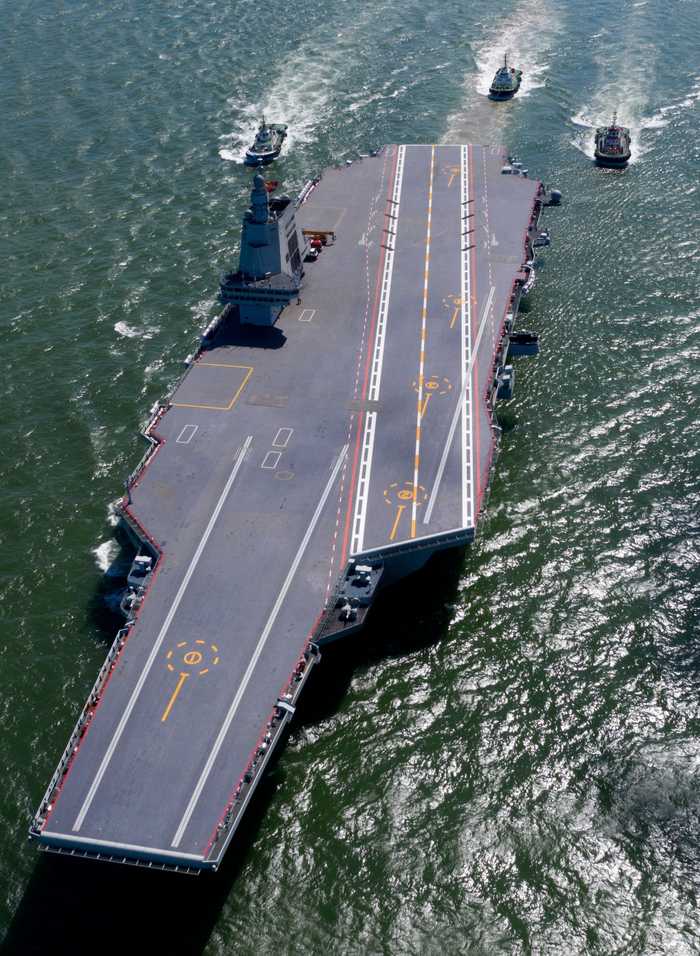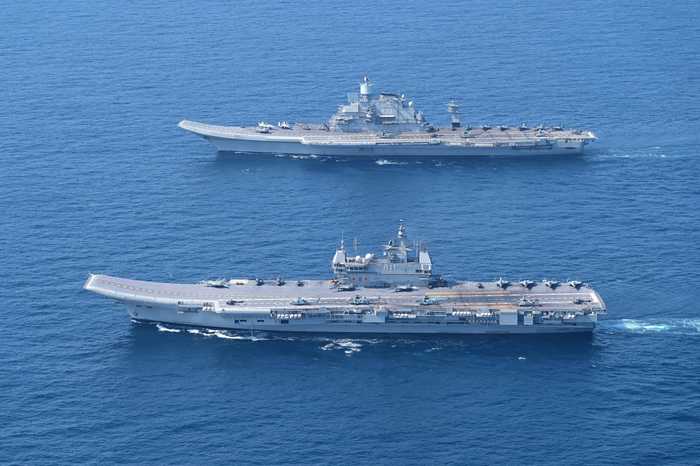Published 10:03 IST, May 19th 2024
This Type 003 carrier, larger and more technologically advanced than its predecessors, the Liaoning and Shandong.
Advertisement
Shanghai: China's third aircraft carrier, the Fujian, named after the mainland Chinese province opposite Taiwan, heralds a new era for the People’s Liberation Army Navy (PLAN). This advanced Type 003 carrier is a substantial upgrade over its predecessors, the Liaoning and Shandong. With a larger size, advanced technology, and increased capacity, Fujian signifies China's ambition to expand its naval reach and assert its influence in regional and global waters.
The Fujian represents a significant technological advancement for the PLAN. Unlike Liaoning and Shandong, which feature ski jump ramps, Fujian is equipped with electromagnetic aircraft launch systems (EMALS). This modern technology, also employed by the US Navy's Gerald R. Ford-class carriers, allows for the launch of a greater variety of aircraft, including heavier jets, enhancing the carrier's operational flexibility and strike capabilities.
Advertisement
With a displacement exceeding 80,000 tonnes, Fujian is capable of hosting a diverse air wing, potentially including up to 50-60 aircraft. This fleet will likely comprise J-35 stealth fighters, modified J-15B fighters for catapult launches, J-15D electronic warfare variants, KJ-600 airborne early warning aircraft, and various helicopters such as the Z-20 and Z-8 series. These advancements are expected to significantly bolster the PLAN's maritime and aerial warfare capabilities.
Wargaming: Implications for the Indian Navy
With three carriers, China can maintain a continuous naval presence in key areas. This persistent deployment can challenge India's dominance in the IOR, complicate Indian naval operations, and require India to allocate more resources for surveillance and counter-presence operations. The presence of a third carrier shifts the power balance in China's favour, compelling India to enhance its naval capabilities to maintain strategic equilibrium. This could lead to an arms race, with both nations expanding their fleets and capabilities to outmatch the other.
Advertisement

The Fujian, equipped with advanced electromagnetic catapults (EMALS), can launch a diverse array of aircraft, including heavier jets with more fuel and weapons. This increases the combat radius and payload capacity of Chinese fighter jets, enhancing their strike capabilities. The carrier's advanced radar and missile systems improve its defensive and offensive capabilities, making it a formidable force in any naval engagement.
Geographical focal points in the India-China conflict
Indian Ocean Region (IOR): The IOR is a vital area of strategic interest for both India and China. India's Andaman and Nicobar Islands are pivotal for monitoring the Malacca Strait, a critical chokepoint for Chinese energy imports. China's enhanced carrier capabilities could threaten these islands and challenge Indian control over this crucial maritime route. The Bay of Bengal and Arabian Sea are other focal points where China's carrier presence could pose direct threats to Indian interests, including major ports and naval bases.
Advertisement
South China Sea and Malacca Strait: The South China Sea, with its strategic importance and disputed territories, is a potential flashpoint. China's carriers can enforce its claims and deter other regional actors, including India, from intervening. Control over the Malacca Strait, through which a significant portion of global trade passes, is crucial. China's carriers can ensure its dominance over this vital route, potentially disrupting Indian trade and military logistics.
Western Pacific and Indian Ocean Nexus: The convergence of the Western Pacific and Indian Ocean is another critical area. Control over this nexus allows for strategic dominance over major maritime routes and ensures power projection capabilities across Asia. China's carrier fleet, operating in this nexus, can significantly undermine India's strategic interests.
Advertisement
The Case for India's Third Aircraft Carrier
To counterbalance China's growing carrier fleet, India needs a third carrier to maintain strategic parity. A third carrier enhances India's power projection capabilities, ensuring it can operate effectively in both the IOR and South China Sea. A robust carrier fleet acts as a deterrent, signalling India's resolve and capability to defend its interests and uphold regional stability.

A third carrier provides India with operational flexibility, allowing for continuous presence and rapid deployment across different theatres. This ensures that India can respond to multiple threats simultaneously, enhancing its strategic reach. Enhanced presence through a third carrier strengthens India's maritime domain awareness and surveillance capabilities, crucial for early warning and rapid response.
Advertisement
With three carriers, India can enhance its role in regional security architectures, such as the Quad, by contributing significantly to collective defence initiatives. This bolsters India's strategic partnerships and positions it as a key player in Indo-Pacific security. A third carrier allows India to conduct sustained operations, including humanitarian assistance, disaster relief, and non-combatant evacuation, showcasing its role as a net security provider in the region.
10:03 IST, May 19th 2024